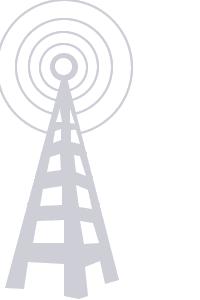Saga Communications – Attractive but illiquid
I observed before that the stocks I like come in pairs, and having found Entercomm, a radio broadcaster that went through a difficult 2008 and 2009 and whose operations now seem to have stabilized but at an attractive price. I believe that with Saga Communications (SGA) I have found a paired company.
 Saga is a smaller company, with a market cap of only $87 million and an average daily volume of only 6000 shares (most days there are only a few trades, some days there are none at all, but the volume is definitely skewed to the upside). The lack of liquidity of this stock may make it unsuitable for many investors, because some care and trading skill may be required to build a position or, more importantly, to exit it if the market becomes volatile. However, the patient long-term investor who can ride out any volatility spikes may expect to be rewarded.
Saga is a smaller company, with a market cap of only $87 million and an average daily volume of only 6000 shares (most days there are only a few trades, some days there are none at all, but the volume is definitely skewed to the upside). The lack of liquidity of this stock may make it unsuitable for many investors, because some care and trading skill may be required to build a position or, more importantly, to exit it if the market becomes volatile. However, the patient long-term investor who can ride out any volatility spikes may expect to be rewarded.
As with Entercomm, Saga Communications had a difficult 2008 and 2009, which resulted in them incurring significant asset impairments. This caused them to book a GAAP loss for the two years. Revenues were lower in 2008 and 2009 than in 2007, indeed, but the impairments themselves were a noncash expense. If we reverse these transactions as nonrecurring, the company’s operating income went from $27.9 million in 2007 to $24.7 in 2008 to $18.7 million in 2009, although fortunately the firm’s operating expenses scale down somewhat alongside their revenue. They have been paying down their debt at a fairly rapid pace, $30 million in 2009 and an additional $8 million year to date. This paying down of debt, plus the fact that their loans are variable rate, has served to reduce their interest requirements from $8.9 million in 2007 to $7.2 million in 2008 to $4.9 million in 2009. Their interest coverage ratio, then, has never dropped below three times. I should also point out that their depreciation expenses have run a few million dollars below their capital expenditures, which is normally a source of free cash flow. However, their current capital expenditures are below historical levels, so it may be better not to count on the additional cash flow. After deducting interest and applying a 35% tax rate, we have earnings of $12.35 million for 2007, $11.37 million in 2008, and $8.97 million in 2009.
For the first two quarters of 2010, advertising revenues have recovered somewhat and are about 5% above where they were for the first two quarters of 2009, and whatever cost containment the firm has been putting into play has been continuing, as their operating expenses are lower than in 2009. The net effect is that they have $11.4 million in operating income, as compared to $6.3 million last year. Interest expense came to $3 million, and removing that and 35% for taxes produces $5.5 million in earnings, or $10.9 million on an annualized basis, which is a fairly attractive earnings yield of 12.5%. Furthermore, the firm states that the first quarter brings in the lowest advertising revenue, so the full year’s results may be a little better.
Under the term of Saga’s credit agreement, the available balance on their line of credit is reduced by $2.5 million each quarter. I’m not sure if I should count this figure against free cash flow or not. On the one hand, it is money that must be set aside for the benefit of creditors rather than shareholders, but on the other hand it seems pretty clear that the firm should be paying down its debts aggressively anyway, since the credit agreement comes up for refinancing in 2012, and at any rate earnings belong to the shareholder no matter what the company subsequently does with them. The firm estimates that its excess cash flow, as defined in the credit agreement, will come to $8.3 million for the year. Presumably, the company has an incentive to define excess cash flow to be less than the full amount of earnings, but it is comforting to see that the company is not projecting a diminution of revenue that would result in an inadequate earnings yield.
The risk, of course, is that come 2012, or earlier if they start encroaching on their covenants, they may have to refinance their debt at a higher interest rate. However, they are generating an adequate return on their money, they have over $200 million in book assets against $96 million in long term debt, which is being paid down. Therefore, it seems to me that the risk of interest rates becoming high enough to put the company and its earnings ratio at risk is a remote one.
As a result, I can recommend Saga Communications as a medium/long term investment for anyone who can deal with the low level of liquidity. Just be careful getting in or out.
Leave a Reply